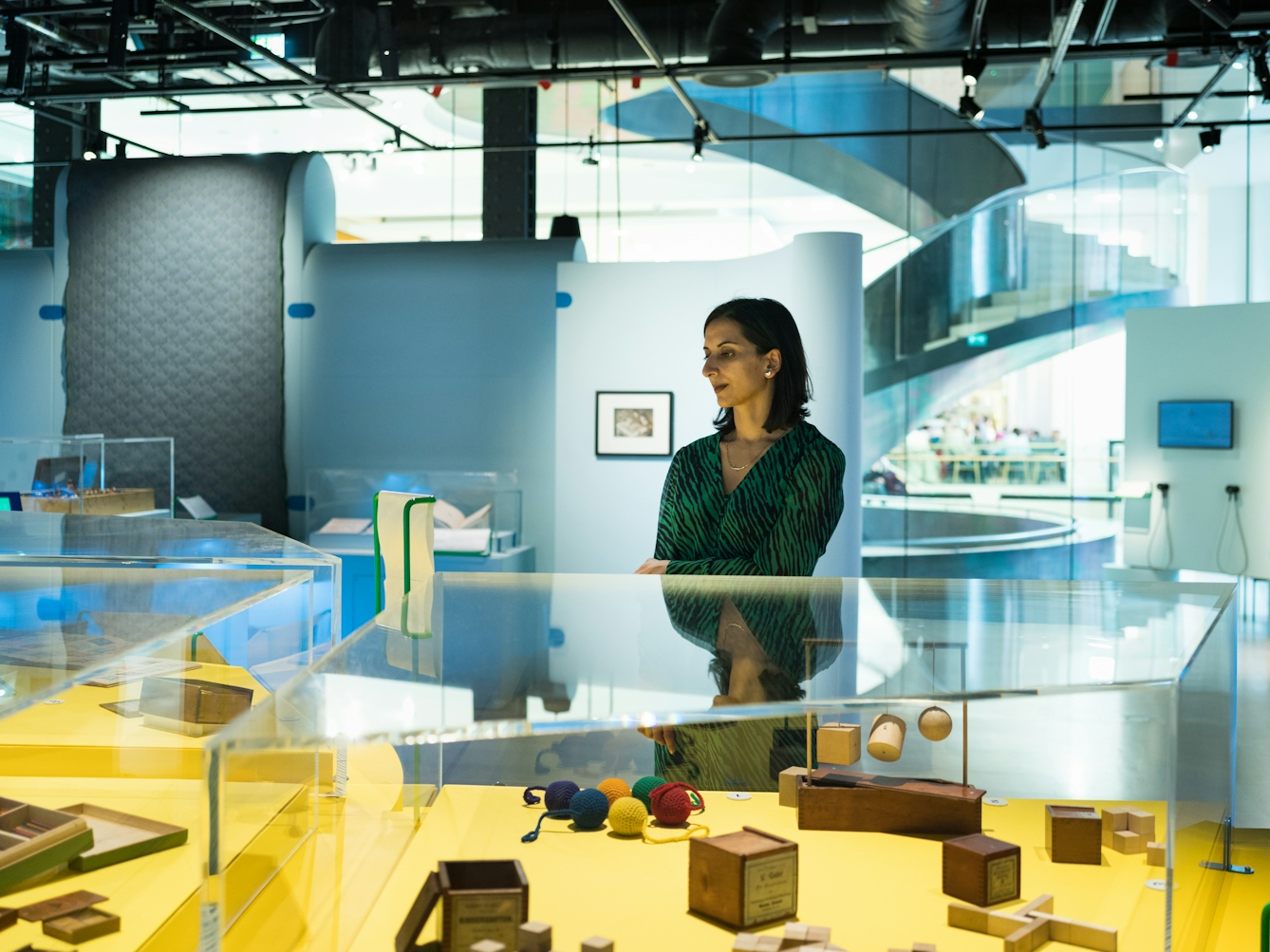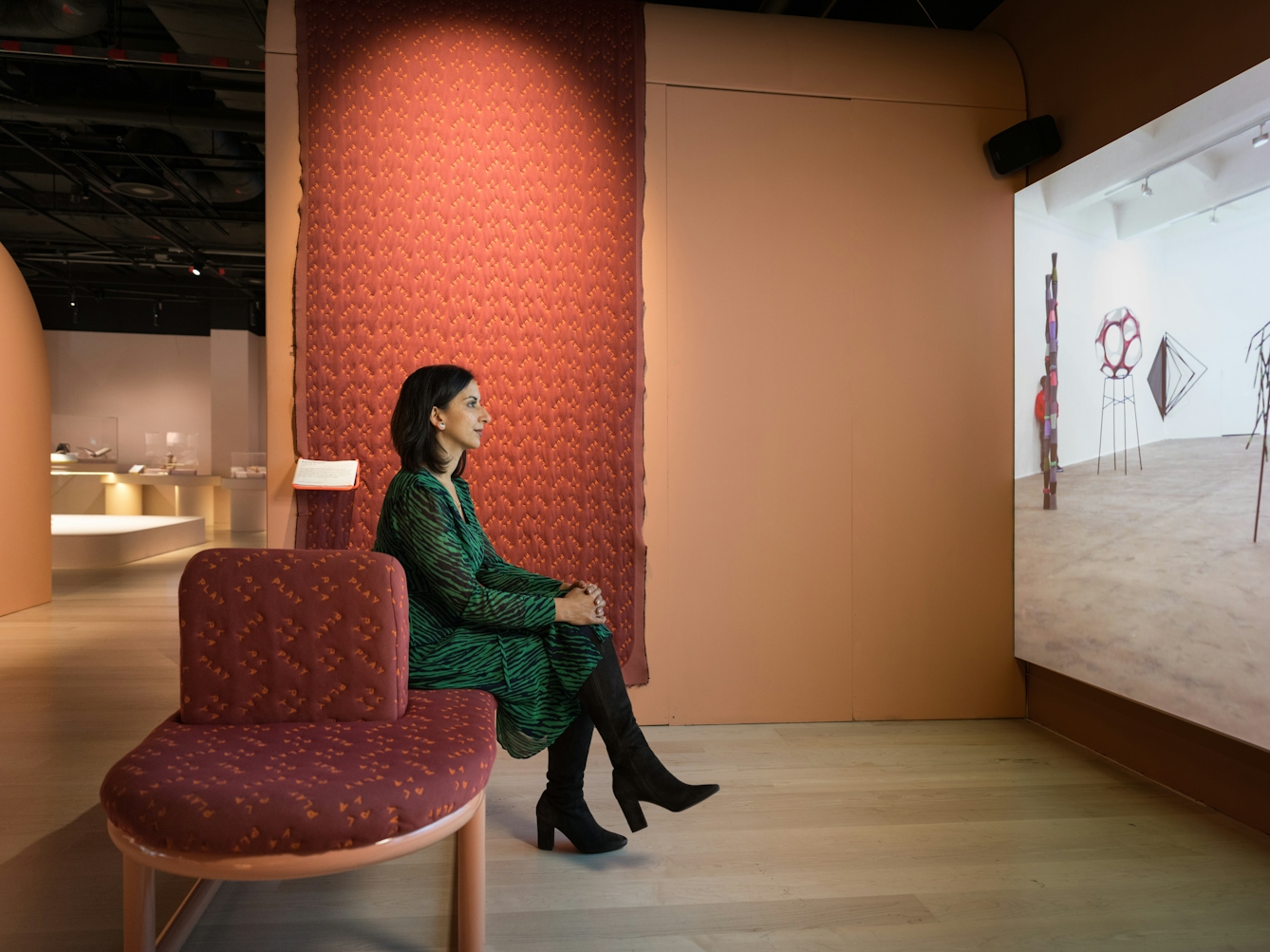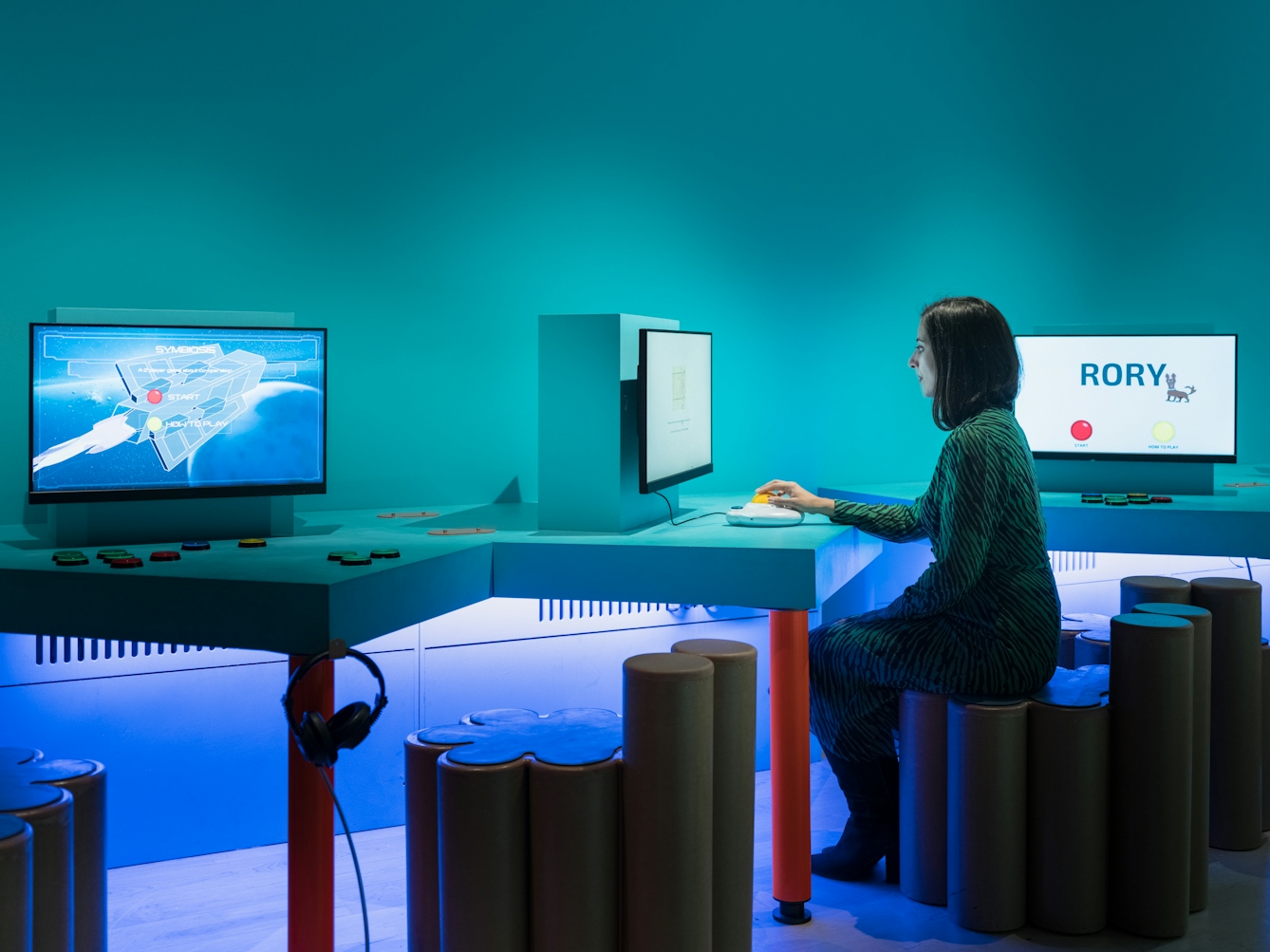It might seem counter-intuitive, but play has a serious role in our lives – especially when we’re very young. Curator Shamita Sharmacharja reveals the thinking behind an exhibition that encourages joy, nostalgia and reflection.
Play is often seen as frivolous – a childish impulse that involves things like stuffed animals, bouncy castles and prized household furnishings being repurposed as dens. But ‘Play Well’ takes it seriously.
“It should be afforded the same elegance and respect as any other subject,” says curator Shamita Sharmacharja. She adds that a trivial topic would hardly yield an exhibition that deals with, among other themes, human rights, trauma and conflict.
And, of course, she’s right. From examining the ad-hoc ‘play labs’ set up by humanitarian organisations for children in refugee camps to scrutinising modern-day fears of gaming addiction, ‘Play Well’ shows how play underpins the full gamut of human experience.
Designed to inspire
Sharmacharja and co-curators Emily Sargent and James Peto wanted to make sure the fun of play came across, too. Putting children centre stage was key. “Everywhere you go you hear children’s voices talking about play; singing, laughing, fighting, crying,” says Sharmacharja. Young people also had a hand in the design: the show’s designers worked with children aged five to eleven from Argyle Primary School in Camden to devise aspects like the font and furniture.
When it comes to the layout, the exhibition’s architect Andres Ros Soto was inspired by the philosophy of designer Isamu Noguchi, who created playscapes that would, as Sharmacharja puts it, “provoke a desire to play instead of dictating how you play”. For visitors experiencing a sudden urge to frolic about after experiencing the exhibition’s nooks and crannies, inviting furniture and design-your-own-path layout… well, that’s why.

Fröbel's Gifts display case.
An instinct for enjoyment
Wellcome Collection’s emphasis on lived experience is particularly pronounced in ‘Play Well’, where visitors are invited to reflect on their own play experiences. Although the exhibition is not primarily an interactive experience, video games, a virtual sand tray and artist Adam James’s commission inspired by larp (live-action role play), for example, are all objects that offer hands-on participation.
There is help for adults feeling shy around the larp area, an installation filled with soft, indeterminate objects: gallery assistants are leading ad hoc games to make sure it’s not solely the realm of uninhibited toddlers.
The play instinct is innate, but if it’s not given the right conditions to flourish, it disappears.
The parameters of play are wide. How did the curators narrow down areas to cover? “We decided quite early on that we were going to look at free play – unstructured, independent activity; independent not meaning you necessarily play by yourself, but independently led, so it’s not part of an organised sport or board game.”
While there’s reference to the ways adults think about play, the ultimate focus is on childhood, thanks to its universal appeal, says Sharmacharja. “We all have been children, we all know children or have children or work with children.”
After working with child-development experts and play therapists, the curators “became really interested in this play instinct and where it comes from. This instinct is innate, but if it’s not given the right conditions to flourish, it disappears.”

Boys and Sculpture film, Children's Art Commission by Eva Rothschild.
Shrinking childhoods and digital play
The material relating to Friedrich Fröbel, inventor of the kindergarten, was a key building block in terms of the exhibition’s focus on shifting attitudes to the educational value of play. “Fröbel was one of the first educators to really give credence to early childhood education and embracing the nature of the child and the nature of play. Before that it was widely thought that nobody could learn anything before the age of seven.”
‘Play Well’ has a lot to say about attitudes towards play in the past two centuries, but also speaks to the present day. “We’re living in a time where concerns about child mental health and obesity are at a record high,” says Sharmacharja. There is also the topical idea of shrinking childhoods – an infographic shows the extent to which the roaming rights of children today have shrunk compared with those of previous generations.
In addition, the exhibition looks at digital play, with Wellcome Collection’s RawMinds programme participants, a cohort of 14 to 19-year-olds, devising video games based on their digital experiences.
“It was really interesting because they were talking about digital space as a place where they could meet up with their friends, places where you could make your own world, places where you could assume a different character,” says Sharmacharja. “And all of these things are things that can happen in other elements of play as well.”

Games designed by Wellcome Collection's RawMinds group.
Challenging stereotypes
‘Play Well’ not only looks at how society impacts play, but how play impacts society. The ‘Toys Like Us’ section explores how maverick toymakers have challenged stereotypes and lack of representation in the industry. One example is the journalist Rebecca Atkinson, who launched the #ToyLikeMe campaign that successfully lobbied industry heavyweights like Playmobil to integrate incidental representations of disability in their toys.
For Sharmacharja, this strand of the show highlighted how play overlaps with agency and taking control. “It’s really interesting – there have been studies done at Goldsmith’s University about how playing with toys that represent a more diverse range of people automatically increases friendship intention. Meaning the idea that you’re more likely to make friends with people who are different to you. So it’s got a real-world connection.”
The vanishing world of outdoor play
The flipside to agency comes in the exhibition’s final section, ‘Rules and Risks’, which looks at barriers to play and the effects of a risk-averse society.
Visitors can marvel at the street play of the post-war period, where “children were really lords of the street”, to the adventure playground movement, which was led by children’s rights pioneer Marjory Allen. She was mindful of the lack of context for risk offered to disabled children, who, Sharmacharja says, “tend to be framed in what they can’t do as opposed to what they’re able to do”. A documentary shows a boy who uses a wheelchair flying happily off a ramp. “The look of joy in his face… it’s quite amazing,” says Sharmacharja.
Photographer Mark Neville captures the freedom offered by adventure playgrounds today, while simultaneously warning of their precarious state of existence in the face of privatisation of public space and rising insurance premiums.
Overall, ‘Play Well’ showcases the transformative power of play – along with the dangers of curtailing the opportunity to do so. With its fun design and reminders of childhood pastimes, it awakens play instincts that may have lain dormant for years.
Ryan Gander’s sculpture of a den built by his young daughter crystallises the nostalgia that suffuses the whole show. As Sharmacharja says, the sculpture, which looks as inviting as a real den but is made of stone-cold marble, “feels like a celebration of his daughter’s creativity but also a loss or a yearning for a time that has gone”.
About the contributors
Gwendolyn Smith
Gwendolyn Smith is a freelance culture journalist based in London.
Steven Pocock
Steven is a photographer at Wellcome. His photography takes inspiration from the museum’s rich and varied collections. He enjoys collaborating on creative projects and taking them to imaginative places.


